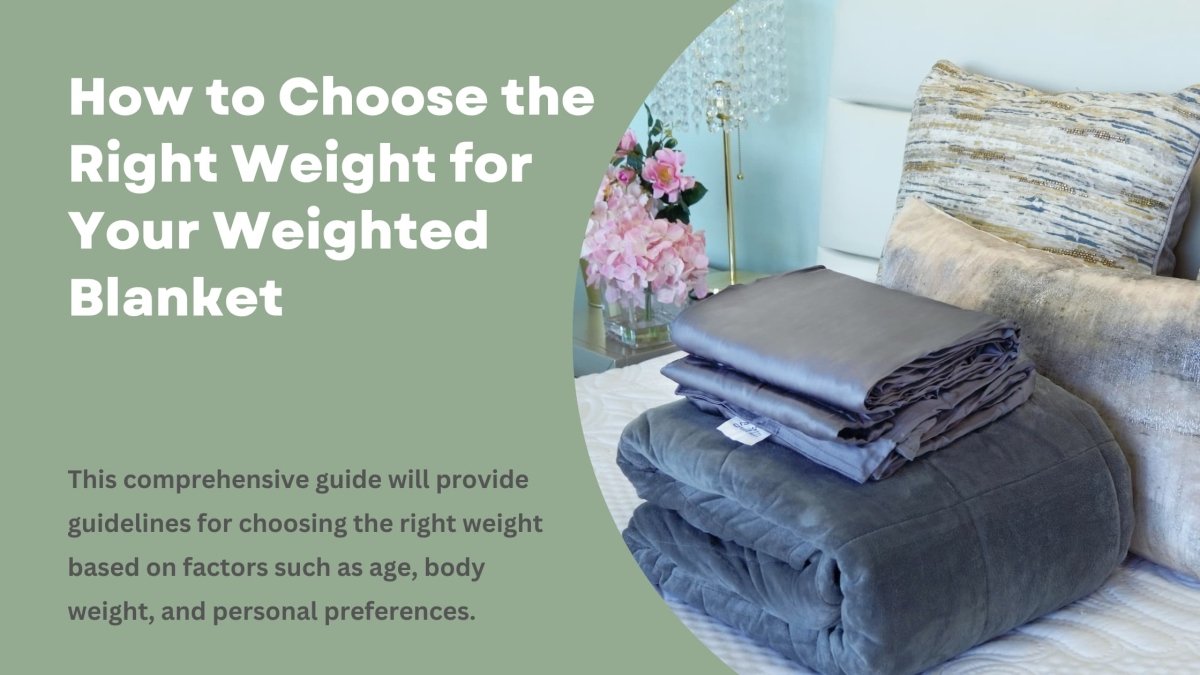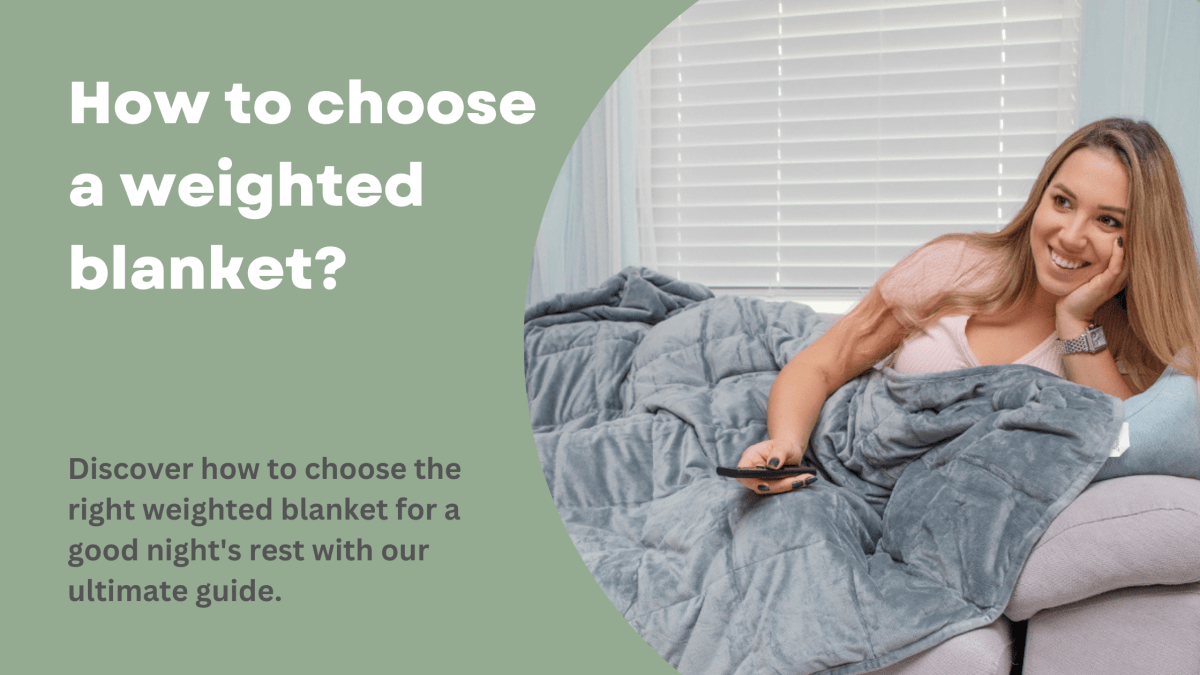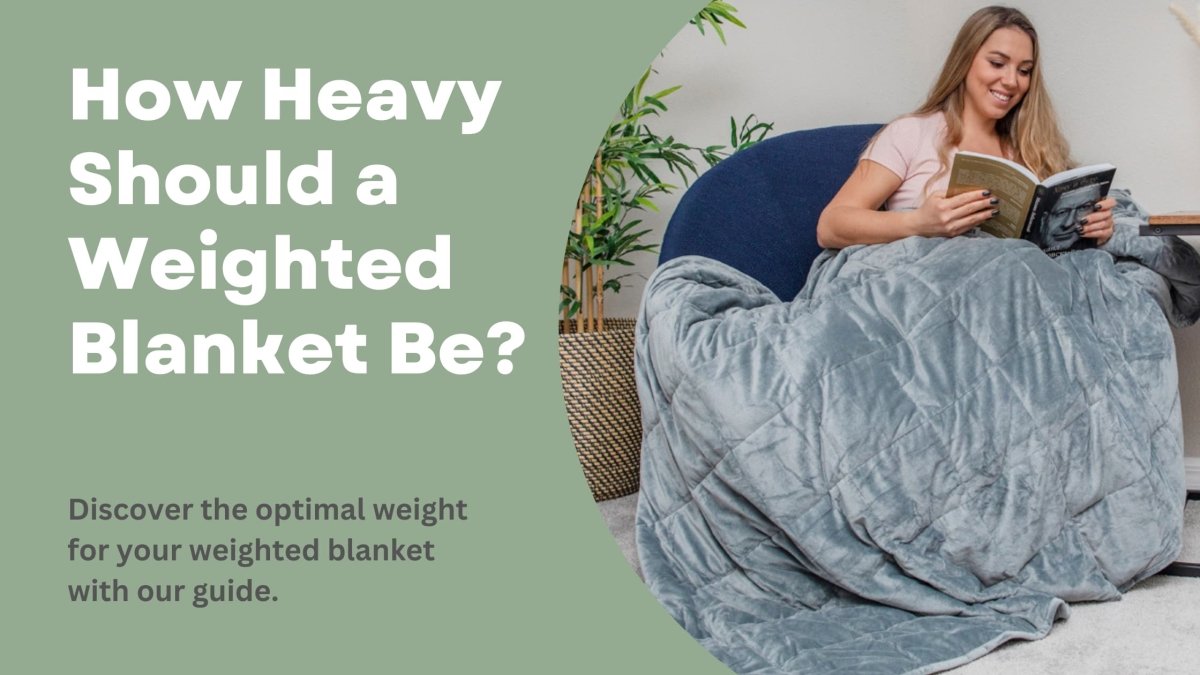How to Choose the Right Weight for Your Weighted Blanket
How to Choose the Right Weight for Your Weighted Blanket
Weighted blankets have become increasingly popular for their ability to improve sleep quality and reduce anxiety through deep touch pressure stimulation. Selecting the appropriate weight for your weighted blanket is crucial to maximize its benefits and ensure a comfortable experience. This comprehensive guide will provide guidelines for choosing the right weight based on factors such as age, body weight, and personal preferences.
1. The 10% Rule: A Starting Point
A general rule of thumb when selecting a weighted blanket is to choose one that weighs approximately 10% of your body weight. This guideline provides a starting point for finding the right weight, as it ensures that the blanket will provide sufficient deep touch pressure without being too heavy or uncomfortable.
2. Fine-Tuning the Weight: Personal Preferences and Comfort
While the 10% rule serves as a helpful starting point, personal preferences and comfort should also be considered when selecting the right weight. Some individuals may prefer a slightly heavier or lighter blanket, depending on factors such as sleep position, sensitivity to pressure, and personal comfort. It's essential to listen to your body and adjust the weight accordingly.
3. Age Considerations: Weight Guidelines for Children
When choosing a weighted blanket for a child, it's important to consider their age and developmental stage. For children aged 2-6 years, a blanket weighing between 3-7 pounds is typically recommended. For children aged 7-12 years, a blanket weighing between 7-12 pounds may be suitable. For teenagers, the adult guidelines can generally be applied. However, it is always best to consult with a healthcare professional before introducing a weighted blanket to a child's sleep routine.
4. Health Factors: Precautions and Contraindications
Certain health factors may influence the appropriate weight for your weighted blanket. Individuals with respiratory issues, sleep apnea, or circulatory problems should consult with a healthcare professional before using a weighted blanket. Additionally, weighted blankets are not recommended for children under two years of age due to the risk of suffocation.
5. Material and Filling: How It Affects Perceived Weight
The material and filling of a weighted blanket can impact the perceived weight and overall comfort. For instance, blankets filled with glass beads tend to feel more evenly distributed and less bulky compared to those filled with plastic pellets. The choice of fabric can also influence the blanket's breathability and warmth, with materials such as cotton and bamboo offering greater breathability compared to polyester.
6. Weight Distribution: Ensuring Consistent Pressure
The design and construction of a weighted blanket play a significant role in ensuring consistent pressure throughout the blanket. Look for blankets with a grid-like stitching pattern or small pockets that evenly distribute the weight, preventing the filling from shifting and clumping.
Conclusion
Selecting the right weight for your weighted blanket is crucial for optimizing its benefits and ensuring a comfortable experience. By considering factors such as age, body weight, personal preferences, and health conditions, you can find the perfect weighted blanket to help improve sleep quality and reduce anxiety. Remember to consult with a healthcare professional if you have any concerns or specific health conditions that may impact your suitability for using a weighted blanket.




